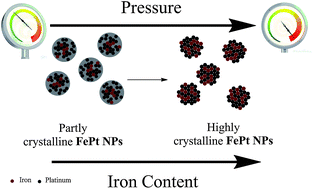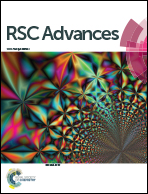High pressure synthesis of FePt nanoparticles with controlled morphology and Fe content†
Abstract
Magnetic nanoparticles (MNPs) are intensively researched due to their high potential in biomedicine, catalysis, and high density information storage. FePt NPs could be an alternative for commonly used magnetite NPs and the synthesis of FePt NPs is an active area of research. The challenge is to increase the Fe content and saturation magnetisation of FePt NPs so that they can be used in many practical applications. Fine tuning of synthetic methods is required in order to achieve the enhanced magnetic properties of FePt nanoparticles and novel methods are being sought. Herein, use of an autoclave is shown to increase the Fe content, crystallinity and the subsequent magnetic properties of FePt pseudo cube nanoparticles compared to those synthesised under atmospheric pressure. Decreasing the amount of oleic acid is also shown to increase the iron content and can lead to elongated FePt nanoparticles under normal pressure. Further application of nanoparticles synthesised in organic media often requires functionalisation or exchange of stabiliser chemicals. Greater demand for control over such functionalisation requires more information about nanoparticle–stabiliser chemical interactions. Infra-red studies indicate mono and bidentate coordination with oleic acid, however shifts of spectra show that the strength of the bidentate interactions weaken with increasing oleic acid amount.


 Please wait while we load your content...
Please wait while we load your content...